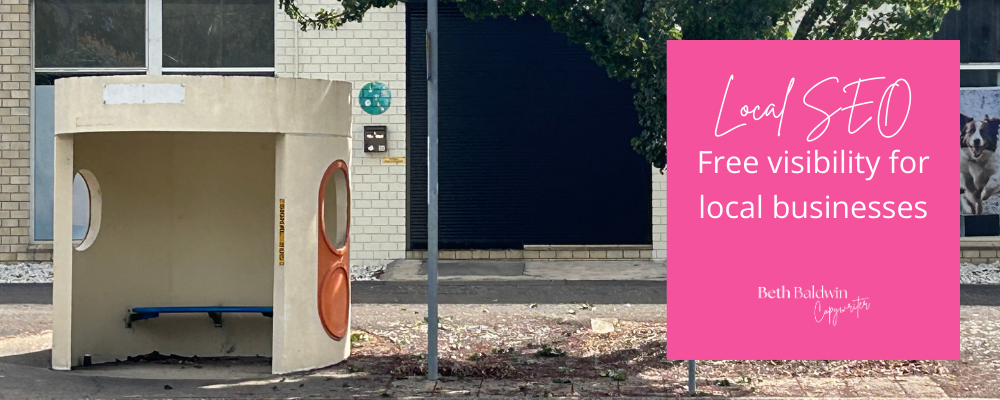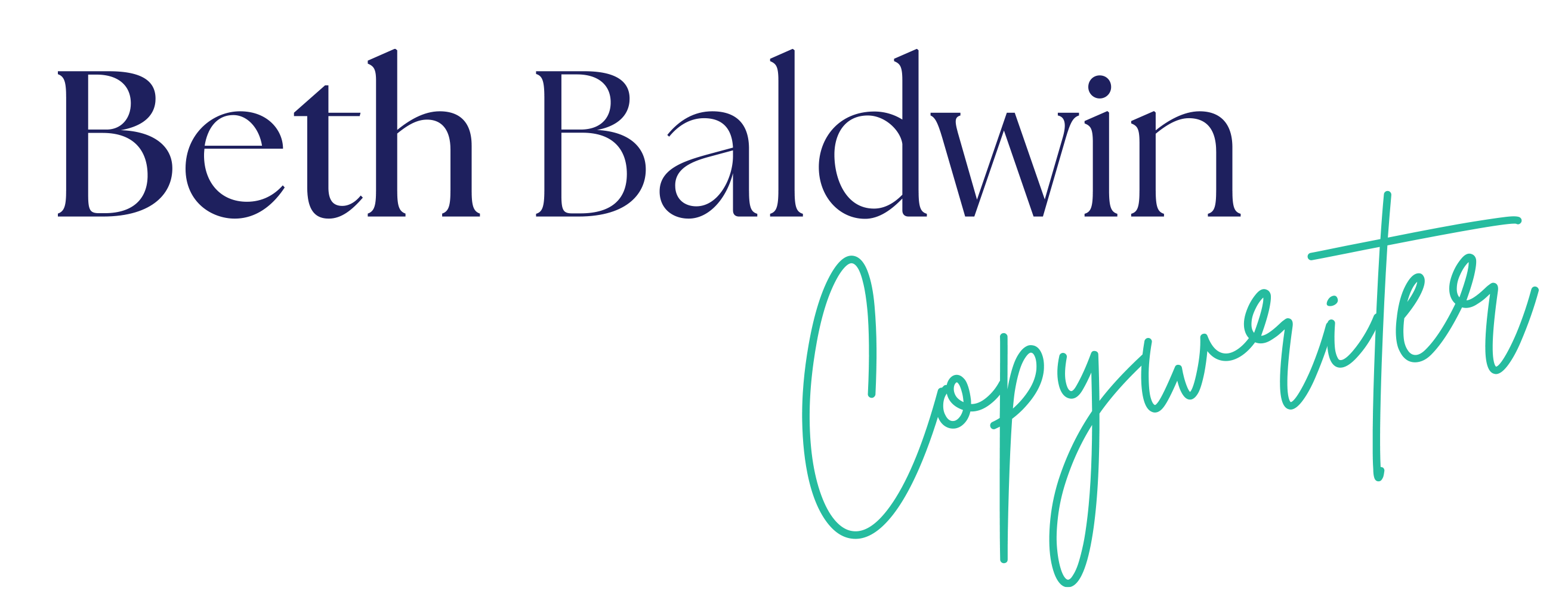
SEO (search engine optimisation) is evolving. It’s now much easier to rank, if you target a small physical area with local SEO. So stop trying to rank for impossibly popular keywords worldwide and think small to grow big.
What is local SEO?
Local SEO is the key to attracting local customers. Use it as a strategy if you own a physical shop that relies on locals, foot traffic, or even tourists visiting the area.
One of the best things about local SEO is that you can start even before you have a formal business website with a clear brand strategy.
Google wants to know where you are, but also to serve up the best answers to your clients – and that doesn’t mean pages stuffed with suburb lists. It uses a complex algorithm including relevance (keywords), distance (map location), and prominence (authority) looking at your entire web presence, not just your website.
Local SEO – website
Local SEO means telling Google what your business does, as well as exactly where it is located. That does not mean stuffing it with suburb lists or overusing words like ‘Canberra copywriter’.
Your business address
Most places include the business address in their footer – you might even consider adding a map link for directions and an easy user experience.
Real photos in places locals might recognise
Naturally include the location in the photo file name. Businesses in Canberra like me might take team photos by Lake Ginninderra or include current photos of their business shopfront. Or maybe have our own local icon – the Belconnen ‘owl’ subtly in the background.
Appear in, or offer, local recommendations
Can you get your business featured in a local top 10 list (backlinks are magic, but even a mention helps)? Or perhaps even write it yourself. I’ve even met a bookshop owner who wrote a piece entitled Best Bookshops on the Central Coast, complete with links and shout outs, to encourage bibliophiles to make a day of it!
Target local and relevant keywords
Use the words local clients and customers would use. For example, here in Canberra at the time of writing, more people are searching for CPD than professional development courses. But don’t just go on your gut instincts, use a tool like Google Keyword Planner to see exactly what people are typing into search engines in your area.
Backlinks, blogs and authority
It’s all well and good to say you are a copywriting professional but a little bit of proof, by way of helpful tips to your potential clients (blogs), goes a long way. So do other people’s recommendations in the form of backlinks to your website from other reputable businesses and brands.
Local SEO – your brand online
Even if you don’t have a website (although I always recommend you get one as soon as you can), you can optimise your web presence for visibility.
A Google Business Profile with reviews for trust and updates for currency
Previously known as Google My Business, a well set up Google Business Profile page lets you show up in the ‘Local Pack’ aka the ‘Map Pack’ (like this).

It’s a great way to boost visibility when someone in your geographic area conducts a search for businesses like yours. But remember – it’s not set and forget. Ask satisfied customers to leave a review, reply to all reviews you receive, and update information regularly with new updates or images.
Social media
That’s right, not only do social media platforms now act as search engines in their own right, Google now shows posts and pages in search results. Think of it like this:
| Website | Social media | |
| Highest priority keyword | Optimised on your landing page.Used regularly and naturally throughout your website. | Included in your social media handle and bio.Mentioned naturally in regular posts. |
| Secondary keyword | Mentioned on your landing page.Optimised to a page of its own. Used intermittently throughout your website. | Included in your social media bio.Used regularly in social media posts. |
| Other SEO boosting keywords | Individually targeted with blogs/resources.Naturally occurring throughout website where relevant. | Rotated through social media posts as relevant.Some may be included in bio. |
Brand mentions and consistency
Make sure your business name and contact information (NAP – name, address and phone number) is the same on your website, Google Business Profile, Social media profiles, and anywhere it appears on the internet. Right down to abbreviations and punctuations, where you can control it. This helps google draw information about your business from mentions that don’t include links like news websites or community forums.
Local SEO – tech tips
Not my speciality but I’ve picked up a few bits – and I know who to ask.
Mobile optimisation
This one is a little techy but its super useful as more of your clients sit searching in the car at school pickup or in the queue for coffee. If you’re like me, and err towards words over tech, I recommend talking to your web developer.
If you need a good web developer who specialises in WordPress and gives you full control of your finished site – I recommend Jacqui at Digital Building Blocks (see that local link there?).
Check load speed, security, and user experience
Even if you are not a tech person, spend five minutes checking these to see if you need one:
- Load speed – because no one likes to wait anymore
Try a site like Pingdom and set it to test from your client’s location. The goal is less than three seconds. - Website security – it’s https or no thank you from me
Might seem obvious but occasionally it slips through the cracks. Make sure your website has as a minimum, the security s in the URL after http. - User experience – make it great from the start
No one likes to be accosted with a barrage of pop ups the minute they open a page. They like a clean landing page with clear communications and next steps.
If your five-minute check raises any issues, or you notice something else, have a chat with your web developer, it never hurts to ask (and if it does – maybe find a new web person?).
If you’re new to SEO or business marketing, why not book a full review or starter consult? For $500 you get 90 minutes 1:1 to set your marketing and comms on the right track, and a simple strategic summary plan. I’ll even include a follow up 15-minute chat a month later for all the questions that arise while implementing. Contact me today.
